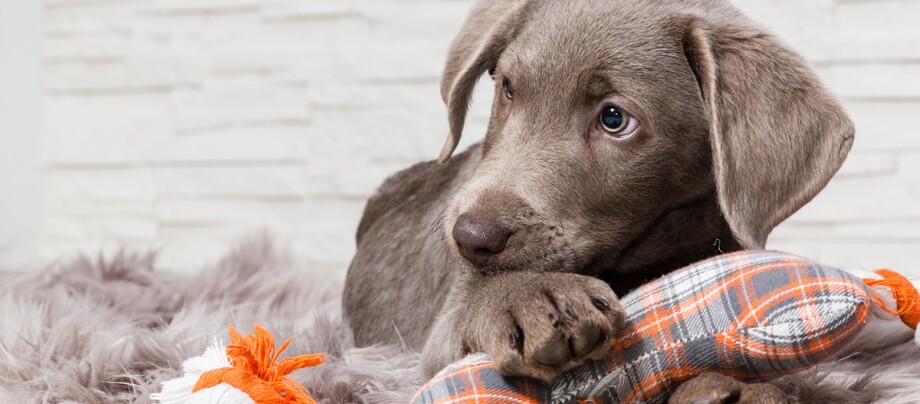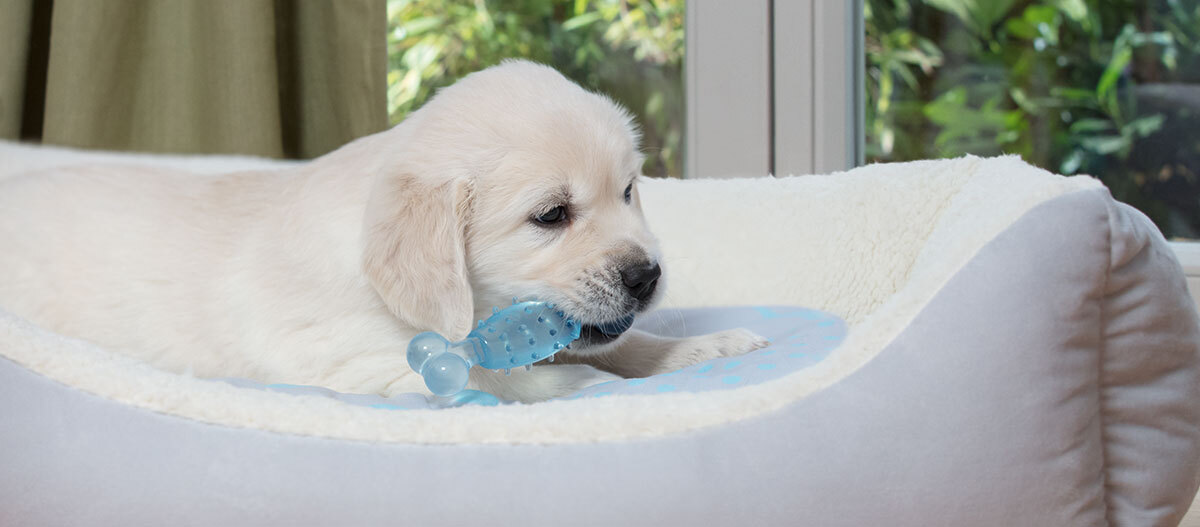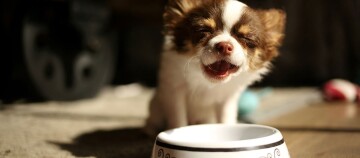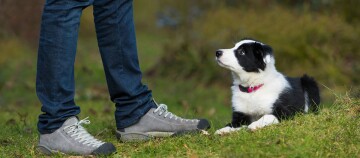Tips on How Your Puppy Learns to Stay Alone, Step-by-Step Guide
03.01.2023 - Reading time: 5 minutes

The fear of being left behind is practically ingrained in puppies. For puppies to survive, it is essential to stay constantly close to their mothers and the pack animals. Left alone, a puppy is usually unable to survive. After the first 15 weeks with the mother, you take over responsibility for the little dog. The Maxi Zoo guidebook gives you tips on how your puppy learns to stay alone, step by step.
Why puppies suffer from separation anxiety
Typically, a puppy comes to you at an average age of twelve weeks. At this point, the puppy loses its sibling pack and the mother who cares for it. It is now up to you to take responsibility for this small creature and give it security, food and affection. This is when the first foundation stone of his relationship with you is laid.
In order to have a well-socialised dog later on, make sure the puppy is not separated from its mother too early. Separation at eight weeks of age, for example, can cause the young dog to have a fear of loss at a later stage. It is equally important for the puppy’s mental development that the puppy is not left to its own devices until it is 15 weeks old.
When it arrives at its new home, the puppy must first come to terms with its first separation – and get used to its new caregiver or human family. Everything will be new, exciting or frightening for him at the same time. Unfamiliar daily rhythms, noises, voices and smells are really hard work for this little guy to take in. First of all, therefore, the puppy has to build up trust in you and bond with you before you can even think about leaving your little four-legged friend alone.
The first exercises to stay alone
You should not start training your puppy to be alone until he is five months old. Every puppy reacts differently when its caregiver leaves the room or the home. You may be lucky and your puppy might curl up in his basket and sleep. But this is the exception rather than the rule. Most puppies get nervous, start barking or whining, and may tamper with your home furnishings out of frustration and stress management. It is thus important to approach the puppy’s alone time exercises gently.
Even when you walk to the bathroom, this can be used as a first exercise. The aim of this daily exercise is to make it clear to your puppy: “I’m going into this room alone and I’ll be right back.” The puppy should get used to the idea of this “sudden disappearance” of his caregiver. Therefore, it is important that you do not pay attention to the puppy beforehand. For example, let him play with his toy or chew bone and use this moment to leave the room unobtrusively. Your reappearance should be as undramatic as when you went out of the room. Don’t be tempted into a goodbye or reunion ceremony by giving the puppy a special cuddle.
Another small exercise is to change rooms frequently without paying attention to the puppy. The puppy will follow you around – and not just once. Keep changing rooms until the puppy no longer enjoys running after you. When the puppy accepts that you are in another room, it will be time for the next exercise.
The big step out the door
Now you can dare to leave your puppy alone for the first time by going out of the house. Again, it is very important to be completely unobtrusive, without making any goodbye gestures or saying goodbye to the puppy. Close the door behind you, stop a moment later and listen to hear your puppy’s noises. If he immediately starts barking or howling, go back inside, but do not pay attention to him. In this case, it will be necessary to go back to the previous exercises and train him more consistently. However, if your puppy behaves calmly, it is time to increase the length of time you stay away. At first, it’s enough if it’s just taking out the rubbish, for example. Later, you can clean the front steps and at some point you can even go for a short trip to the shops.

If you already know that your dog only needs to be left alone at certain times of the day, train him to be alone at the same times. He will learn to adjust his internal clock accordingly – and will be able to wait for your return much more calmly.
How long can you leave puppies alone?
There is no standard answer to this important question. Every dog is different in this respect. Especially in puppyhood, however, the rule is quite clear: as short as possible. Puppies generally have short sleep and wake phases and need to relieve themselves quickly. If the puppy wakes up too often in your absence and has to relieve itself, this can lead to the dog becoming permanently unclean. He may also get into the habit of chewing on sofas and table legs out of frustration or fear. Unwanted behaviour patterns or anxiety disorders can be a result of being left alone for too long in puppyhood.
Bear in mind that it is not appropriate for adult dogs to be left alone at home for a long working day. Up to five hours is considered the maximum.
Read on in the Maxi Zoo guide “Leaving your dog alone“.


